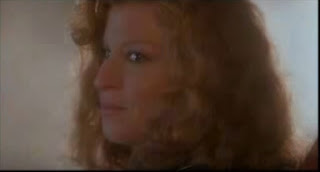There's a new BEACHES coming out next month and it's bound to suck. Here's why.
BEACHES is a great story, for those of you who haven't seen the 1988 original. It follows the story of two women, C.C. Bloom and Hillary Whitney who meet on the boardwalk as young girls, and follows their journey into adulthood. C.C. is a poor child star who blossoms into a successful actress while Hillary is an aristocrat who marries the wrong guy and is forced to raise a child by herself. Through their 30 year relationship, we see them struggle with adulting, have a falling out, reconcile, and eventually deal with Hillary's fatal diagnosis of viral cardiomyopathy. One might think "Hey, there's not a lot of plot here" which critics initially did, but there is more to the 28 year old gem that is now a home video and cable TV classic.
BEACHES was released under the fairly new Touchstone Pictures, a little side project designed by the Disney studio to bring in a more adult themed demographic. The films the studio was turning out were generally comedies and very successful. In 1987, Touchstone released STAKEOUT and THREE MEN AND A BABY. Both films cost roughly $15 million. STAKEOUT tripled its production cost in revenue while THREE MEN AND A BABY racked in $168 million, making it the most financially successful picture of the year. The line of films also gave Oscar nominated Bette Midler a contract for a series of films after she had been out of work for roughly seven years. She was rising to the top with hit Touchstone comedies like DOWN AND OUT IN BEVERLY HILLS, RUTHLESS PEOPLE, OUTRAGEOUS FORTUNE and BIG BUSINESS, all of which were very successful. BEACHES would be her return to drama after many years.
So how does a film that is panned by critics, with a very thin plot line, triple its budget of $20 million to $60 million in its initial release? It had to be more than just a hit soundtrack. What were all the critics missing? To be honest, they missed what the people behind this remake are missing: the beautiful way that director Garry Marshall and editor Richard Hasley put it all together. The key to a successful drama is to enter the viewer's subconscious through subtle editing. Only when the subconscious is entered can a heart string really be tugged. If the viewer can see what the editor is doing without analyzing it, then the emotional effect is lost. BEACHES has many touching moments through its editing.
Consider the scene in which the film's hit song "Wind Beneath My Wings" is featured. Hillary is about to die and her death could have been a drawn out process. Instead, Hasley chose to edit it in a sequence that took 11 shots and less than two minutes. Here's a brief analysis. Shot one: Hillary on her bed, in focus as C.C., out of focus, is talking to a nurse about getting her released so she can die at home.
Cut to a melancholy C.C. looking out from a porch. What is she witnessing that is so sad and difficult in her face?
Cut to Hillary and her daughter saying their goodbyes on the beach as C.C. walks towards them.
Cut back to C.C. as her expression changes from sad and difficult to sad and accepting of Hillary starting to fade away.
Cut back to Hillary on the beach. The camera zooms in on the beach chairs as C.C. sits next to her.
Cut to C.C. as she turns and smiles at Hillary, in an attempt to lift her spirits.
Cut to the beach sunset. The beach has the potential to symbolize so much but for this writer, it symbolizes where life begins and ends, and also where C.C. and Hillary's relationship begins and ends (they met on the Atlantic City boardwalk toward the beginning of the film when Hillary got lost).
Cut back to C.C. as a look of fear hits her face.
Cut back to the beach sunset as the camera follows a horse trotting on the sand, and the sun has now mostly set, two symbols of Hillary's soul leaving.
Cut to the funeral. Hillary's coffin is revealed under two symbolic curtains. A group of bodies in black suits in front of the camera peel away to reveal a Hearst, which drives off to finally reveal a coffin. We see a figure in black in front of it.
The camera cuts to reveal the figure as C.C., and we know that Whitney has in fact passed.
So simple, and yet so poignant. There is no dialogue after that first shot-- just music and sound effects. How did the critics miss this? How did the people who decided to remake the film miss this? Unless Lifetime plans on doing a shot-for-shot remake, there's no way their film will even compare. It's debatable whether or not viewers pay attention and notice the editing details of the sequence outlined in this post, but the fluidity is what triggers each level of emotion within them and keeps them returning to this film for repeated viewing. It's flattering that Idina Menzel and Nia Long want to star in a remake, but it's bound to fail, plain and simple. Why? Because the potential of artistic merit in the direction and editing that the original had is lacking.

















